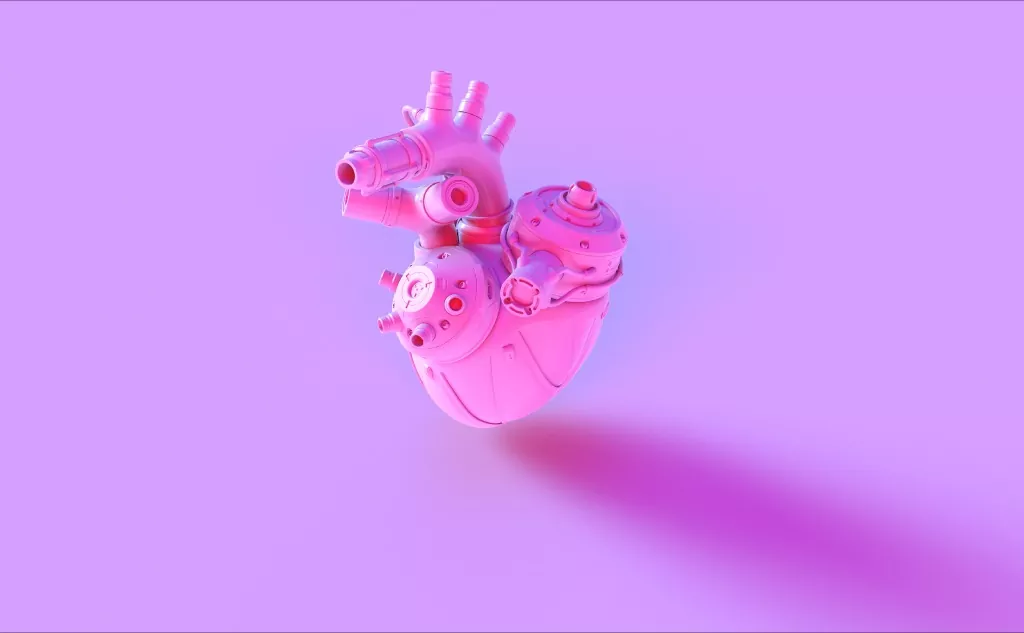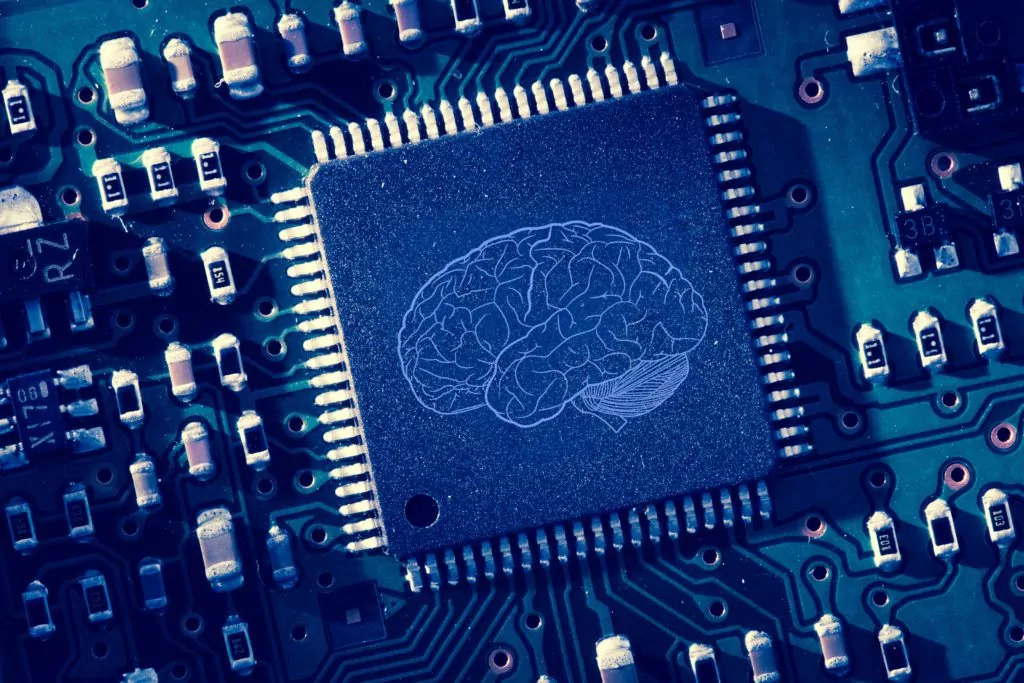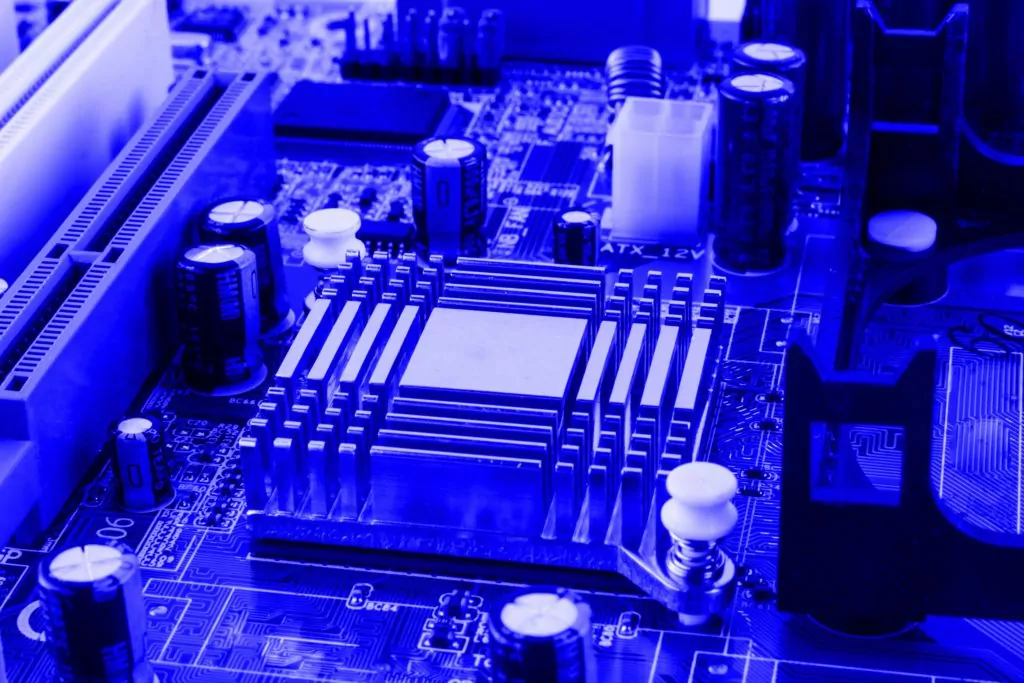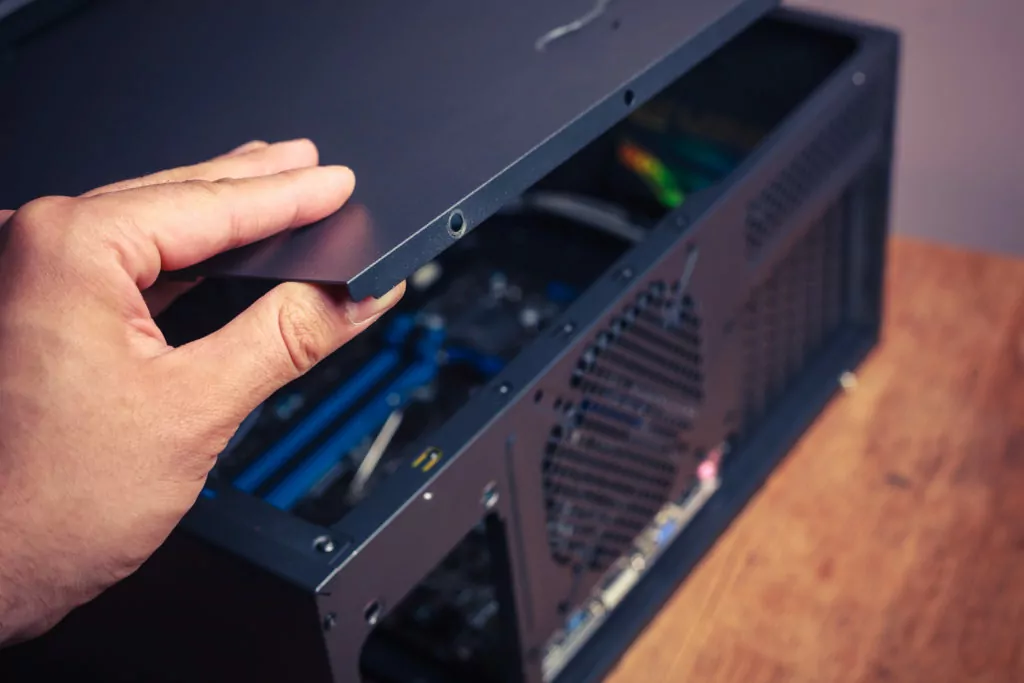Here are the heart and the brain of a computer.
The CPU and GPU are the brain—the heart is the northbridge of the motherboard.
So if you’re curious how a computer compares to human body, then this article is for you.
Let’s get started!

How a Computer Compares to the Human Body—Analogies
A computer is a complex piece of hardware with many moving parts working in harmony—similar to how the human body works or operates.
Like the human body, part of the computer tells it what to do, another part processes things, and another part supplies energy.
This article will dive into the central processing unit (CPU), the graphics processing unit (GPU), the northbridge, the power supply unit (PSU), the southbridge, and the system bus.
On a more superficial level, the webcam, microphone, case, and USB also contribute to making the computer whole and fully functional.
When combined, these moving parts let you browse Facebook, write a report for school or game to your heart’s content.
If just one non-superficial part gives up the ghost, the computer is useless.
The same is true for the human body. It’s astounding how dependent and fragile both the human system and the computer system is.
Let’s jump right in!
The Brain of a Computer
The brain of the computer, made up of the CPU and the GPU, is possibly the most critical element of the system.

The brain of the human, made of various lobes, is also vital. Both are very complex and responsible for a lot:
The brain of a computer is the CPU and GPU.
Frontal Lobe and Temporal Lobe
The frontal lobe and temporal lobe in the human brain are similar to the CPU in a computer.
The frontal lobe is the control panel of our personality and our ability to communicate. It controls critical cognitive skills such as emotional expression, memory, language, judgment, problem-solving, and sexual behaviors.
The temporal lobe is responsible for encoding and storing memory. It also contains the primary auditory complex so that you can understand what you’re hearing.
The central brain of a computer, on the other hand, is a microprocessor called the CPU. This chip is the central part of the computer and contains millions of tiny transistors.
The CPU’s job is to crunch the numbers, make the decisions, and problem solve.
In fact, most CPUs today can process more than 1 billion instructions in a single second.
Much of the working memory happens here as well. The CPU and memory work together to run programs, which is why a small block of memory, called a register, is built into the CPU. It is the fastest form of computer memory as you can access its contents in just a few nanoseconds.
Occipital lobe and Parietal lobe
The occipital lobe and parietal lobe in the human brain are similar to the GPU in a computer.
The occipital lobe is the visual processing center. It deals with distance, depth perception, color determination, object recognition, movement, face recognition, and memory information.
The parietal lobe processes sensory information such as touch, taste, and temperature and helps coordinate spatial relations.
The occipital lobe and parietal lobe of the computer is the GPU, where image, video, and 3D processing occurs.
A GPU can be present on a video card (also called a graphics card), embedded on the motherboard, or embedded on the CPU die (integrated circuit).
The Heart of a Computer
In the human body, the heart is responsible for pumping blood throughout the body and maintaining blood pressure.
While there may be some dispute over what the heart of the computer is, it makes the most sense to compare it to the northbridge.
The heart of a computer is the northbridge on the motherboard.
The Northbridge
The northbridge is one of two chips on the motherboard, the other being the southbridge.
It is responsible for tasks that require the highest performance, such as routing data in the computer and managing the flow of information.

More specifically, it communicates between the CPU and external devices through buses.
Many systems don’t have a traditional northbridge/southbridge configuration any longer.
Instead, they are integrated into the CPU and simply called a “chipset,” which allows for faster communication and better functionality.
As computers continue to evolve closer and closer to a system on chip architecture, the CPU will gain more functions.
Therefore, the CPU can be called both the brain and the heart of the computer.
The Lungs of a Computer
There’s more to the body than just the head and the heart, and more to a computer than only the CPU, GPU, and northbridge. For example, what about the lungs?
You know the function of the lungs—they let us breathe, bring oxygen into the body, and exhale carbon dioxide.
Oxygen is an essential element to power life as the body uses it to burn food molecules. People could not survive without it.
The lungs of a computer is the PSU.
The Power Supply Unit
It is clear that the lungs of the computer are the PSU. Like how humans cannot survive without oxygen, the computer cannot even turn on without the PSU as it converts the energy everything else runs on.
The power from the PSU has to go through other systems in the computer before it becomes useful.
In comparison, the blood flows from the lungs through the arteries and heart to oxygenate the body’s organs.
If you are experiencing power interruptions or need to prepare for one, consider investing in a UPS (uninterruptible power supply), which acts as a standby generator when your primary source of power fails.
The Digestive System of a Computer
Your body needs more than just oxygen for fuel. The digestion system allows your body to get the nutrients and energy it needs from the food you eat.
It consists of the gastrointestinal tract plus the accessory organs of digestion, which breaks down food into smaller and smaller components until they can be absorbed and assimilated into the body.
The digestive system of a computer is the southbridge on the motherboard.
The Southbridge
The closest parallel you can draw to the digestive system is the southbridge. This term should sound familiar because it was mentioned before when discussing the northbridge.
The southbridge organizes and controls access to data. Specifically, it implements the motherboard’s slower capabilities, such as the hard drives and USB—it connects to the CPU through the northbridge.
Much like how the digestive system feeds the body, the southbridge provides the CPU with data so it can do its job.
Think of the data as sugars processed by our bodies so that your brain can work and you have the energy to perform well during the day, both physically and mentally.
As technology has evolved, the southbridge became redundant. People now use successors such as the Platform Controller Hub (PCH) architecture bundled with the Intel 5 Series chipset in 2008.
The Nervous System of a Computer
The nervous system comprises nerves and specialized cells that transmit signals between different parts of the body—virtually the body’s electrical wiring.
The nervous system is equivalent to the system bus in the computer.
The nervous system of a computer is the system bus.
The System Bus
The system bus is a communication pathway composed of wires that control signals moving between the computer system’s major components.
It consists of 3 buses:
- Data bus to carry information
- Address bus to determine where to send it
- Control bus to determine its operation
The system bus was developed to provide even more modularity with reduced cost and was popular in the 1970s and 1980s.
However, the modern computers of today use separate buses modified to meet specific needs.
The system bus history and the ways it has evolved to maximize data transfer rates between components are quite impressive.
The most common buses used today are eSATA and SATA used for hard drives and disc drives, PCIe used for expansion cards and video cards, USB used for computer peripherals, and thunderbolt used for peripherals connected through a USB-C cable.
The Eyes of a Computer
The eyes of the computer are—you guessed it—the webcam!
The eyes of a computer is the webcam.
The Webcam
The first webcam was developed in 1991 at Cambridge University by a young man who just wanted a fresh cup of coffee. (Read the story here!)
However, the first commercial camera was sold in 1994 and was made by Logitech. Webcams are generally integrated into the computer today.

Live streaming with a webcam is one of the oldest Internet trends. In fact, the oldest webcam in the world, the San Francisco FogCam, ran for 25 years.
This webcam started as a student project at San Francisco State University and is the longest continuously operating webcam in the world.
Be careful with your webcam because a hacker can watch the video feed and infiltrate your privacy.
If you’re paranoid about someone staring at you through your webcam, many people choose to use a camera cover just in case or purchase anti-virus software.
The Ears of a Computer
The ears of the computer are the microphone.
The ears of a computer is the microphone.
The Microphone
As with the camera, the microphone is usually embedded in modern computers.
You’ll notice, however, that many people who have a podcast will use an external microphone. This is because you can buy high-quality external microphones and achieve a much better sound.
The earliest “microphones” were acoustic megaphones, and they were created in 1665 by the English physicist Robert Hooke.
You may have heard of it and played with one as a kid—it was made of stretched wire with a cup attached at each end.
The first legitimate microphone that enabled proper voice telecommunications was the carbon microphone.
This was developed by the infamous Thomas Edison. However, most historians credit a British man named David Edward Hughes with the invention.
The Skin of a Computer
The skin is the largest organ in the body. It creates a barrier so that dirt and pathogens can’t harm you.
Compare this to a computer case, which contains and protects all of the components inside of a computer.
The skin of a computer is the computer case.
The Case
When people talk about a computer case, they’re usually talking about it in relation to a desktop. It is the hard metal or plastic part around “the organs” of the computer. There are several reasons why computer cases are essential.

The first and possible most obvious reason is for protection. Dust and liquids could easily damage the inside of the computer if not for the case.
The second reason is aesthetics. It’s not exactly pleasing to the eye to be looking at all those cables and drives that make up the computer. It’s quite a mess in there.
The third reason is to keep the area cool and have proper airflow over the computer components.
Keeping the hardware cool is vital because it could overheat to the point of malfunction if it gets too hot.
The last reason is to keep the noise level down. Keeping noisy computer parts, like the fans, in a closed space within the computer case, is one way to reduce the noise that they make. And they can make a lot of noise!
The Limbs of a Computer
The computer’s limbs are anything you can connect to the computer through USB-C, Thunderbolt 3, or similar interfaces.
A huge range of accessories can make up “limbs,” though some may also qualify as “ears and eyes.”
The limbs of a computer are the peripherals.
External Peripherals
External peripherals connected by USB-C, Thunderbolt 3, or similar interfaces are nice-to-have features on a computer.
Modern computers usually have a universal port, so both USB-3 and Thunderbolt 3 can plug into the same spot.
In turn, many are confused about the difference between the two.
If you didn’t already know, a USB is a standard connector that transmits both data and power on a single cable.
You may have used a USB-3 port to plug your phone into your computer on occasion.
Thunderbolt 3 does everything a USB-C port can, but it is much faster and lets you transfer data up to 40Gbps.
It also enables you to connect external monitors, daisy chain to six additional devices, and support PCIe devices for gaming. Some call it USB-C’s big brother.
Interestingly, Apple was among the earliest adopters of Thunderbolt 3 for computers.
Now, more and more PCs are coming with Thunderbolt 3 support as well.
However, not every company is jumping on board because to use Thunderbolt 3 because you have to obtain certification from Intel.

